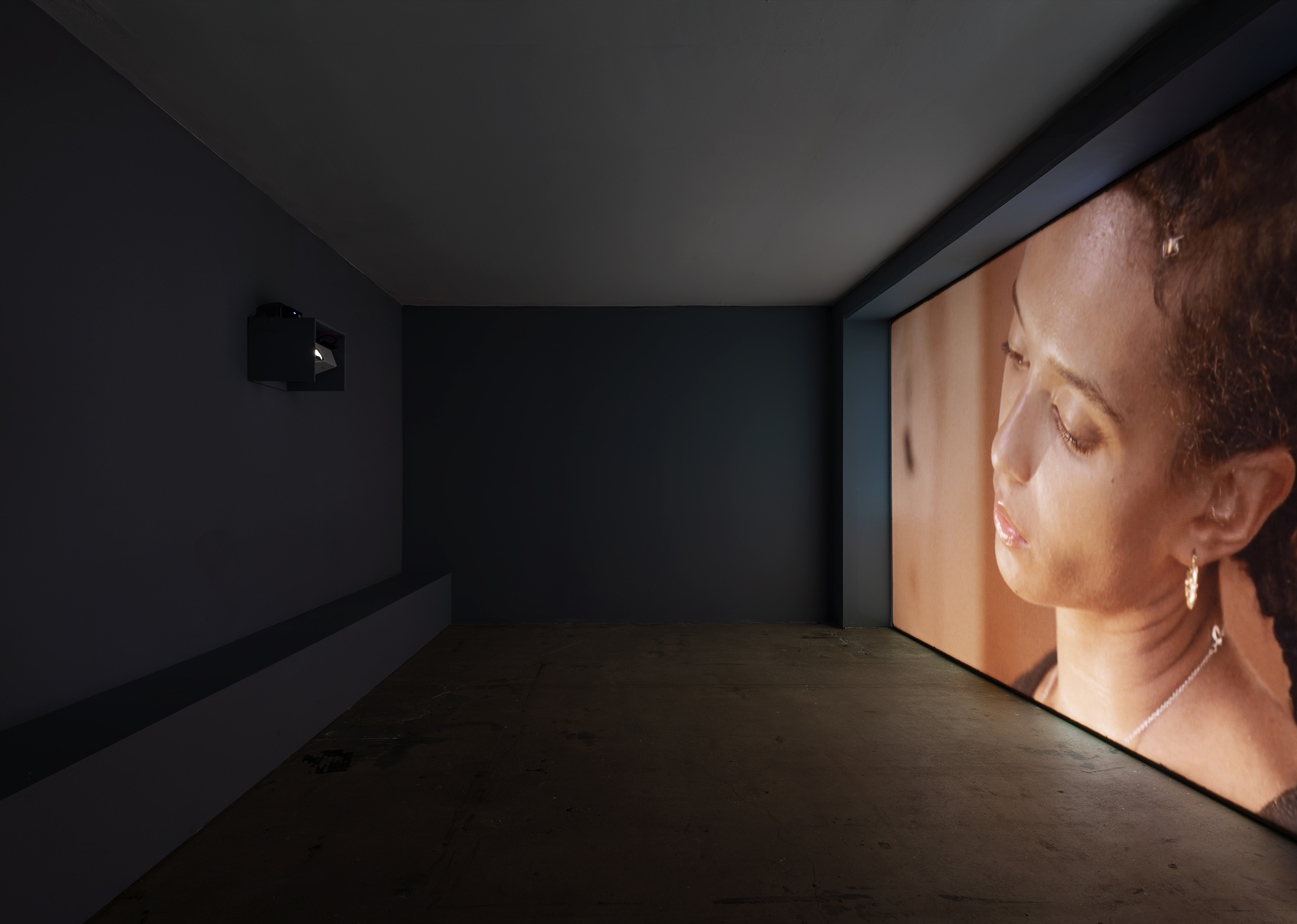Refusing Intimacy: Deborah-Joyce Holman’s “Close-Up” at Swiss Institute
In 1920s France, the filmmaker, writer, and theorist Jean Epstein sought to frame the nascent medium of film—then in its earliest, most technologically crude stages—as a visual art, one fully unique from theater, literature, or photography. His film theory texts outlined his vision of a true cinematic art or photogénie.1 Epstein’s definitions of photogénie were purposefully vague, but he saw one filmic technique as symbolizing the power of this new medium: the close-up, or, as he described it in Magnification, “the soul of the cinema.”2
Nearly a century after Epstein articulated his idea(l)s of photogénie in films such as Coeur fidèle (1923), Swiss artist Deborah-Joyce Holman’s video installation Close-Up (2024)—now on view at Swiss Institute following last year’s presentation at Kunstverein Freiburg—offers a direct challenge to cinema’s soul, using the close-up as a method of abstraction that obscures as much as it reveals.
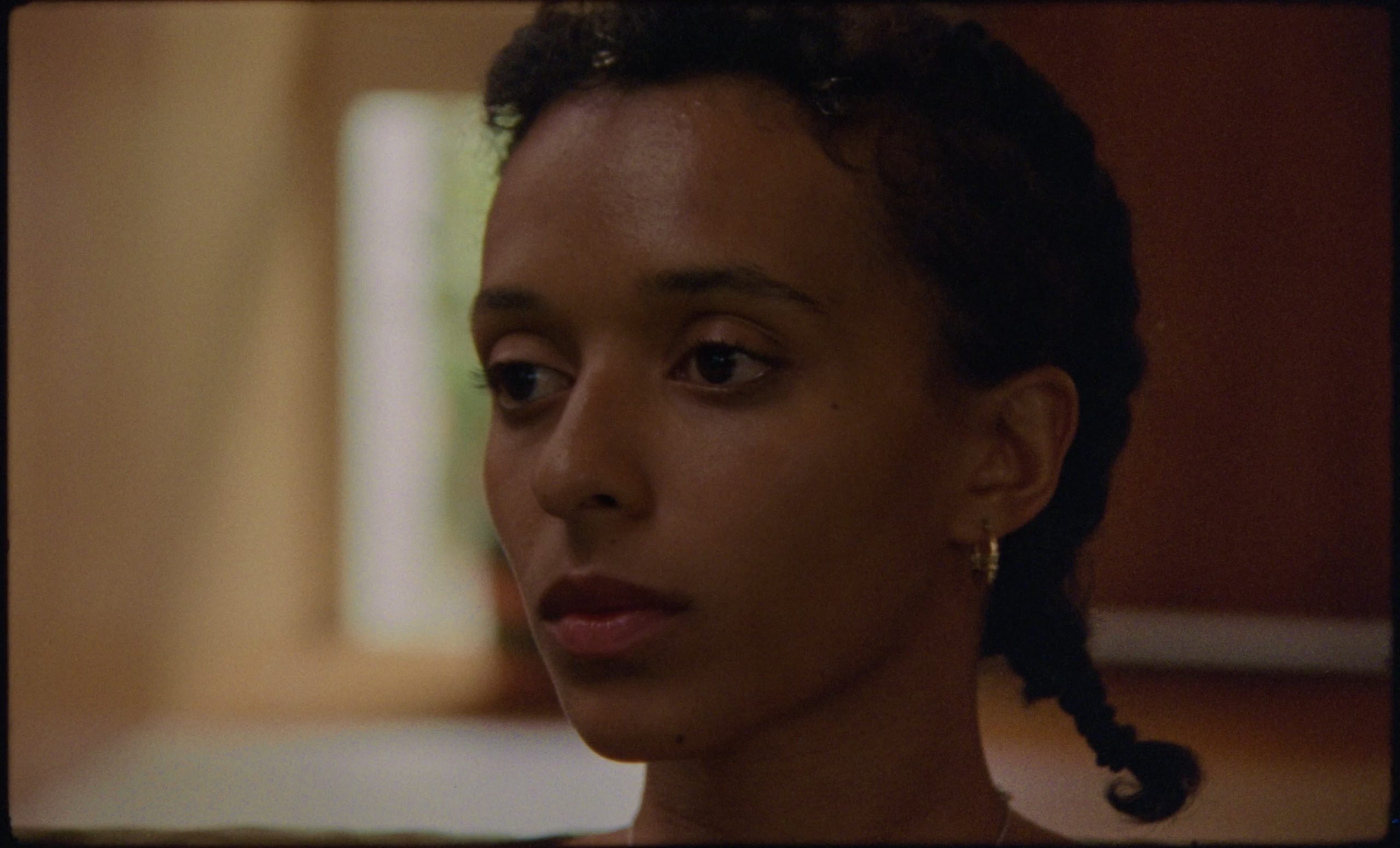
A wall-sized projection of Close-Up is installed in the New York institution’s lower-level gallery, engulfed in darkness. Clocking in at an economical sixteen minutes, the video restages a single scene from Holman’s 2023 multi-channel video installation Close-Up/Quiet As It’s Kept. In the 2024 iteration, Holman switches the original’s mid-range shots for close-ups, isolating a domestic sequence featuring performer Tia Bannon to meditate on the mundane and “anti-spectacular.”3 The video plays on a hypnotic loop as Bannon goes about her daily routine in a space we presume to be her apartment. It is a seemingly typical and relaxed routine: she makes a cup of tea, changes clothes, and relaxes on her couch in the midday sun before leaving the apartment. But Holman’s tight framing leaves these actions and surroundings largely presumed. The act of getting ready is reduced to a close-up shot of a staircase and the rhythmic thud of feet as Bannon leaves one room for another, and later on, making tea will be marked only by the clinking of glass and the light gurgle of a kitchen faucet as it is turned on and off.
Holman’s lens captures the smallest details of the space, from the lush pink tulips in a vase and the condensed tea leaves in our protagonist’s mug, to a recent issue of The Funambulist magazine and Elizabeth Alexander’s 2004 text The Black Interior on a bookshelf. These objects are paired with images of Bannon’s face, head, and shoulders. We watch as her placid countenance floats around the room, gazing off into the distance as she goes about her day with little change in her expression or affective register. In the absence of marked emotion, we are left to focus in on the physicality of her face’s features and movements: the wispy curls escaping from two neat plaits, rich, mahogany eyes, and delicate hoop earrings that gently swing as she walks. In such close proximity, even the smallest furrow of a brow registers as a major movement—the only suggestion of this character’s inner thoughts and motivations.
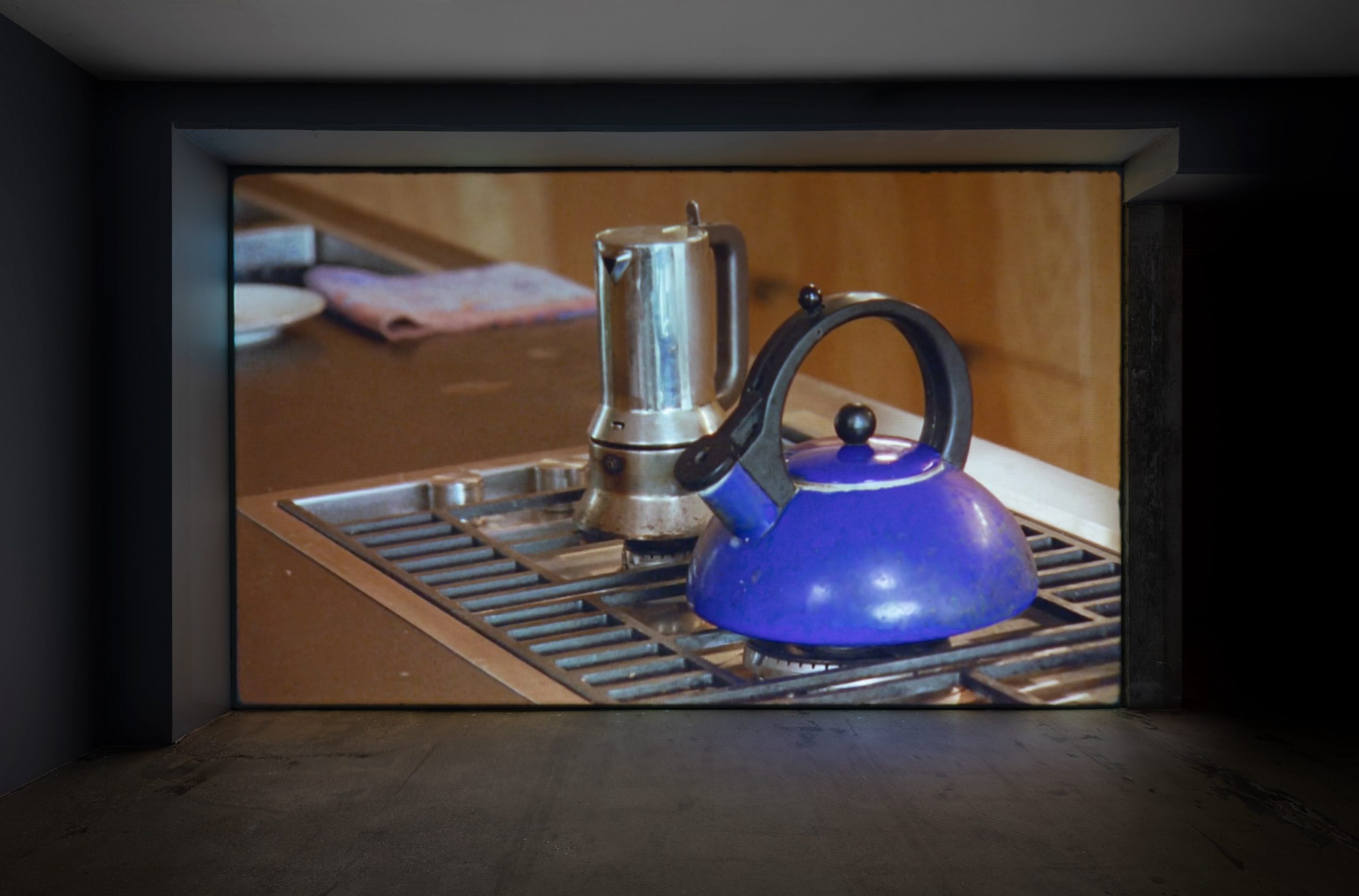
In the history of both narrative and experimental cinema alike, the close-up has been a means by which a filmmaker can highlight the emotional stakes of a plot line by centering overlooked details in a scene and enlarging minute variations in the scene’s subject, which in many cases is the face of an actor. Pioneering Soviet filmmaker Sergei Eisenstein used the close-up to spectacular effect in the Odessa Steps Massacre sequences in Battleship Potemkin (1925) by interspersing scenes of carnage with the horrified faces of those who were witnesses to the violence. He discussed this shot in his essay “A Close-Up View”:
“And finally, with the help of the close-up (the enlarged detail), the spectator plunges into the intimate matters on screen: a flinching eye-lash, a trembling hand, finger-tips touching the lace at a wrist … All these at the required moment point to the person through those details in which he ultimately conceals or reveals himself.”4
For Eisenstein, the vantage of a close-up or medium shot allows for the transference of emotion between the viewer and the subject, establishing an intimate, “human nearness to images on the screen.” Writing that a “good” close-up is seen by “the heart, not the eye,” scholar Béla Balázs compared the function of the close-up to that of the soliloquy in theater, a monologue in which a character directly conveys their motivations and inner thoughts to an audience, and in so doing, provides narrative clarity.5
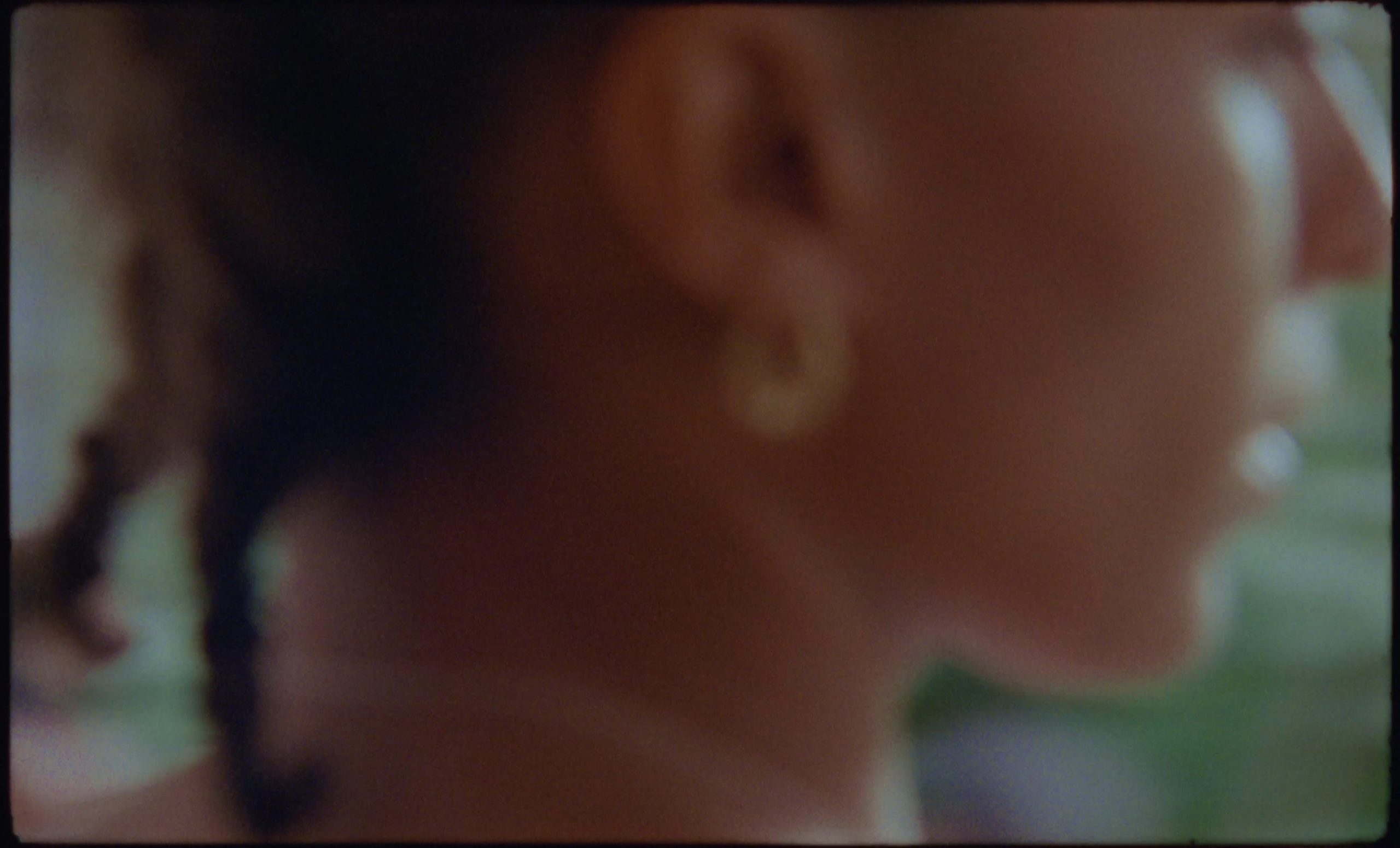
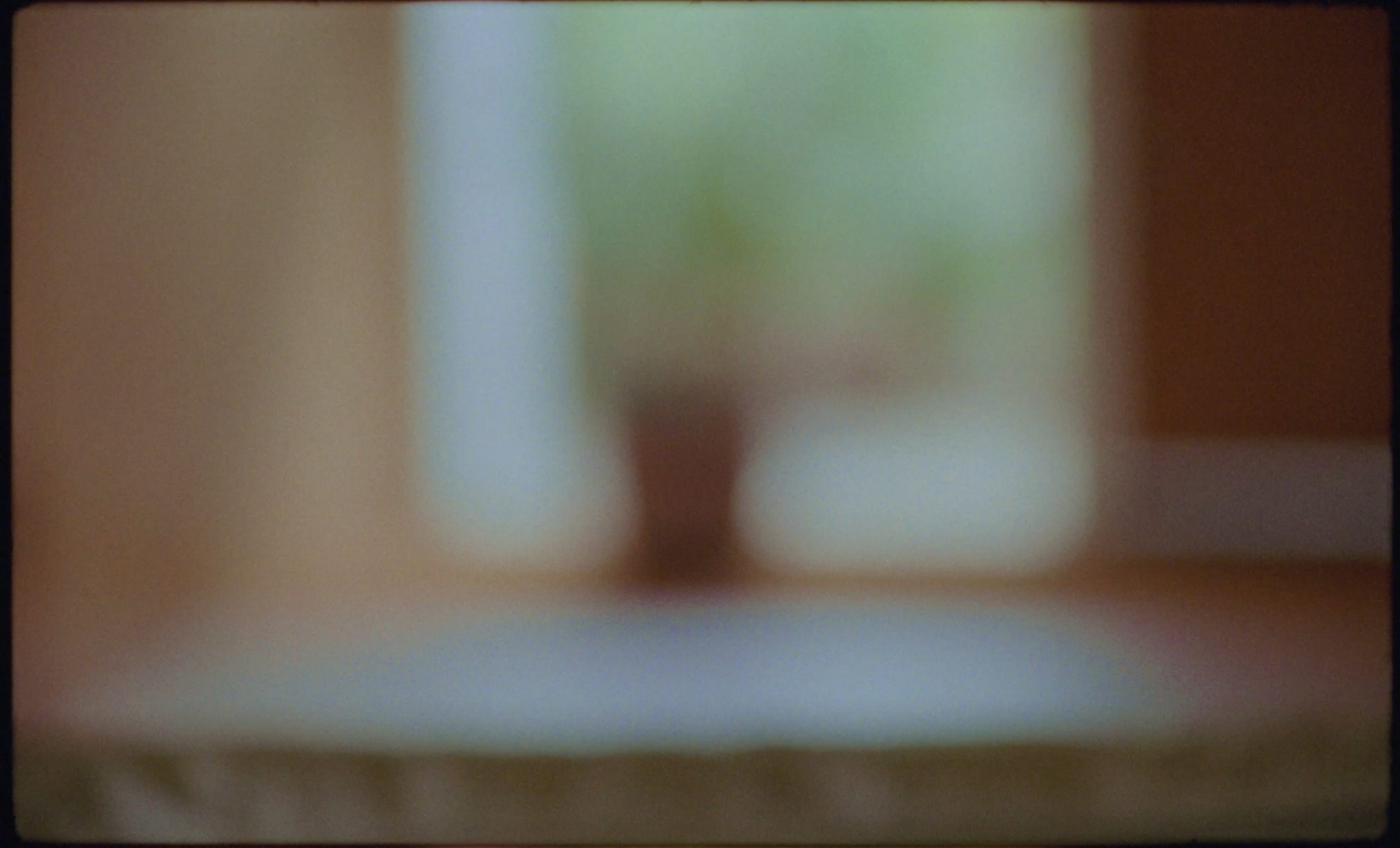
Considering this history, Close-Up is beguiling if not outright confusing, like a cinematic brainteaser. A wealth of information regarding the protagonist has been plainly and clearly presented, and yet her motivations—as well as that of the filmmaker themself—are wholly unknown. Holman undermines the historical function of the close-up by taking it to its extreme: they present information in a manner so detailed, so intimate that the narrative becomes fully abstracted. Because Bannon’s character neither speaks nor conveys discernible emotion through her facial expressions, she conceals her thoughts from everyone but herself, dismantling the assumed relationship between subject and viewer wherein the subject’s agency is diminished in the name of narrative. There is no “human nearness” as Eisenstein describes, and in its absence, we question why audiences demand intimacy from people on screen—and most importantly, whom we demand it from.
“There is no ‘human nearness’ as Eisenstein describes, and in its absence, we question why audiences demand intimacy from people on screen—and most importantly, whom we demand it from.”
Holman’s insistence on dismantling the harm inherent within cinematic grammar has long been a hallmark of their practice. In Moment 2, presented at LUMA Westbau, Holman responds to Shirley Clarke’s 1967 film Portrait of Jason, a seminal documentary capturing the unraveling of local larger-than-life hustler Jason Holliday, filmed in the director’s Hotel Chelsea apartment over the course of a single evening. Drawing from the trauma, humor, and heightened emotion of his experiences as a Black, queer man in New York, Holliday regales Clarke with stories from the streets only to be cross-examined by the director, resulting in Holliday’s emotional breakdown, which is cruelly documented by the unrelenting gaze of Clarke’s camera. In Moment 2, the performer Rebecca Bellantoni repeats lines of dialogue from Holliday in a luxe hotel room overlooking the London skyline. Transforming Clarke’s two-hour tête-à-tête into a looping nine-hour monologue, Holman stages a “subtle [act] of refusal and opacity.” They explain, in a recent conversation with Cédric Fauq for Flash Art International:
“Taking Portrait of Jason as a starting point interested me, as it exemplifies so many problematic dynamics—one of which was the way Jason was choreographed and the mode in which the camera captured him … Combined with the abrasive questions Clarke and her then-boyfriend Carl Lee ask, the film takes the approach of scratching away the surface of someone, peeling away at how Jason himself wants to present himself. There’s something really troubling, that speaks to maybe a wider dynamic of a huge appetite for trauma, or, specifically Black trauma, which turns trauma into a consumable, especially in images and video.”6
If Portrait of Jason is symbolic of the violence to which filmic subjects are subjected, Moment 2 breaks this cycle. As Bellantoni recites Holliday’s words with the rhythm and solemnity of an incantation, their meaning becomes abstracted, removed from the pain of their origins and refusing Clarke’s directorial power. The agency of the subject is restored, no longer subjugated to the will of the director or the interest of the audience.
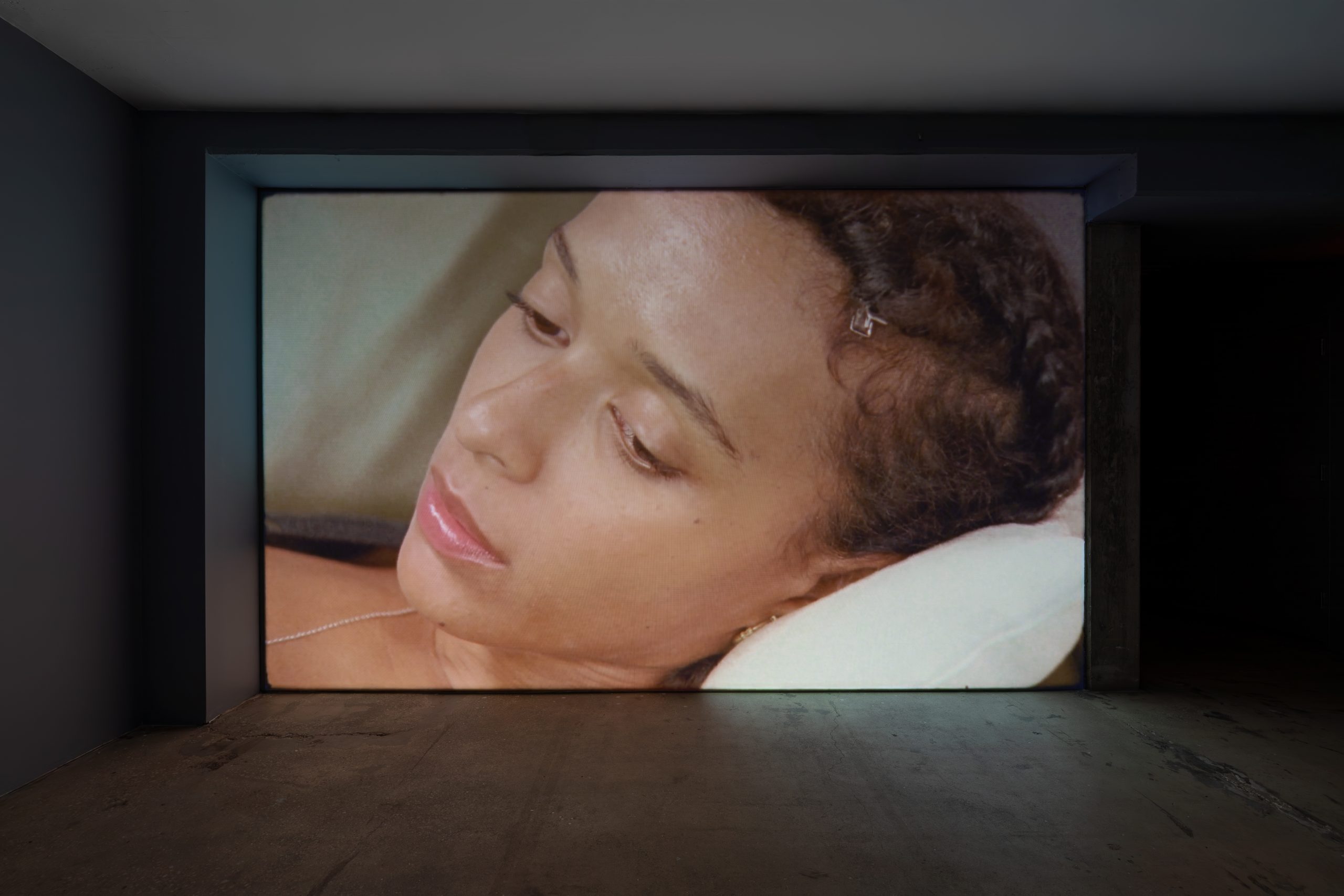
Close-Up extends the project of Moment 2 by proposing that the revision of one particular filmic technique, the close-up, can enable cinema to divorce itself from the conventional power dynamic between subject, director, and audience. While Moment 2 achieves abstraction through repetition, Close-Up does so through magnification and elision. It may seem contradictory to position Close-Up as an abstraction of form: the figures are clearly framed, and the video follows a traditional—albeit inconclusive—linear narrative, mimicking representational aesthetic forms. And yet, by enlarging particular details so that the broader tenors of a scene remain unseen, these close-ups conceal necessary information about the plot and characters, making what could have been a straightforward presentation of images anything but. Holman’s form of abstraction evinces the “right to difference” or “opacity” for African diasporic subjects that Édouard Glissant outlines in his 1990 text Poetics of Relation, as well as Rizvana Bradley’s theory of anteaesthetics. For Bradley, Blackness represents the “metaphysical threshold and abyssal limit” of modernity’s aesthetic regime. “Black aesthesis,” she writes, is “always already subject to the violence” of the antiblack world, even as it is unable to “claim a home” within it.7 And yet this positionality also equips the Black artist to deconstruct the aesthetic tactics foundational to modernity and expose the violence inherent to them. With the close-up, Holman uses the very tactic that would otherwise make Bannon—and, by extension, Holman themself—susceptible to the dominant gaze of the audience and totally reverses its power. The close-up counterintuitively becomes a method for envisioning opacity in the visual field, rendering the subject impenetrable.
So where does this leave Holman’s audience? We can return to Glissant, whose aforementioned text refuses the supposed notion that opacity negates the possibility of solidarity. Countering the interpersonal identification on which so much classical cinema relies, Glissant instead argues for a radical embrace of difference, writing that it is “not necessary to try to become the other (to become other) nor to ‘make’ him in [one’s] image” in order to build social bonds.8 The sense of “intimacy” created between audience and subject by Epstein and Eisenstein’s close-up came at the cost of the latter. But Holman refuses this dynamic, both for themself and for Bannon as Black artists creating within a formal structure intent on their subjugation. The audience will ask questions of Close-Up, but it will offer no answers—as quiet and enigmatic as the face staring back at them.
Madeleine Seidel is a curator and writer based between Brooklyn, New York, and Atlanta, Georgia. Seidel is currently an assistant curator at Performa, and she is a regular contributor to international publications such as Frieze, Burnaway, Interview Magazine, and others.
NOTES
1. Jean Epstein, “De quelques conditions de la photogénie,” Cinéa-Ciné pour Tous 19 (August 15, 1924): 6–8.
2. Jean Epstein and Stuart Liebman, “Magnification and Other Writings,” October 3 (1977): 9–25. https://doi.org/10.2307/778434.
3. Swiss Institute, “Deborah-Joyce Holman: Close-Up,” Exhibition Text, January 2024.
4. Sergei Eisenstein, “A Close-Up View,” in Film Essays and a Lecture, ed. Jay Leyda (Princeton: Princeton University Press, 1982), 150.
5. Béla Balázs, Theory of the Film: Growth of a New Art, trans. Edith Bone (London: Dennis Dobson, 1952), 56.
6. Cédric Fauq and Deborah-Joyce Holman, “Counter-stances and Refusals: A Conversation with Deborah-Joyce Holman,” Flash Art International, Fall 2022, https://flash—art.com/article/deborah-joyce-holman/.
7. Rizvana Bradley, Anteaesthetics: Black Aesthesis and the Critique of Form (Stanford: Stanford University Press, 2023), 2.
8. Édouard Glissant, “For Opacity,” in Poetics of Relation, trans. Betsy Wing (Ann Arbor: University of Michigan Press, 1997), 192.
